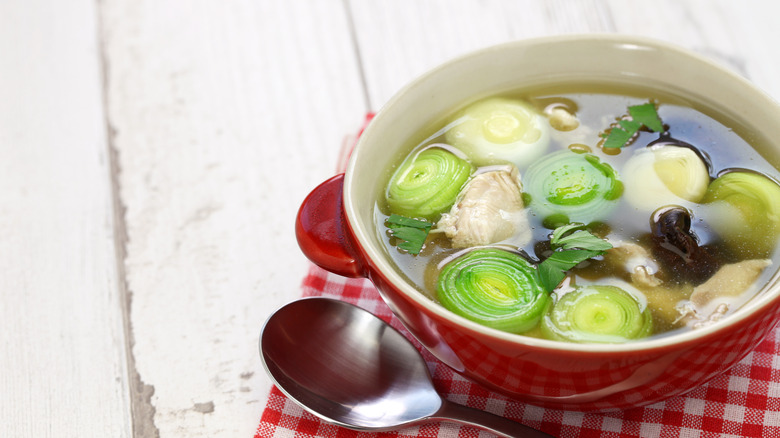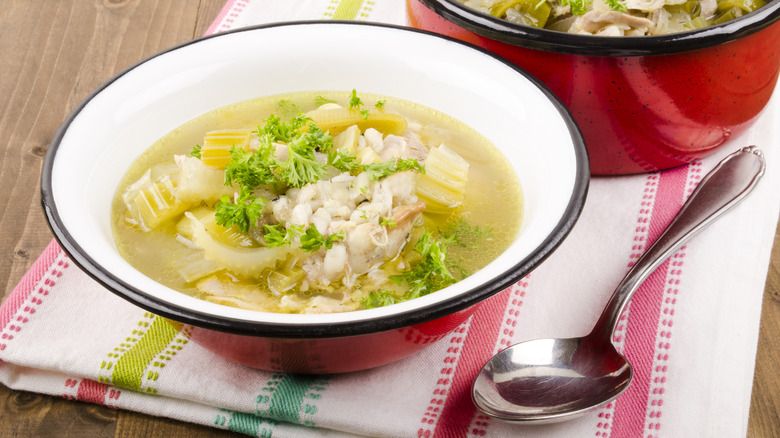The Medieval Origins Of Cock-A-Leekie Soup
When it comes to traditional Scottish food, the national dish of haggis is probably front and center in most people's minds (possibly due in part to the shock value). But if you ever attend a Burns Night celebration, you'll be presented with a bowl of cock-a-leekie soup, a comforting broth of chicken and leeks thickened with oatmeal or rice, perfect for staving off the Scottish winter.
Cock-a-leekie is considered the national soup of Scotland, and little wonder why — the Scots have been eating it in one form or another since the 16th century. The first recorded instance in the country was in 1598, though it's thought to have made its way over from France during the time of the alliance between the two countries. As the soup entered the local repertoire the French onions were replaced by leeks, which grow abundantly in Scotland.
It wasn't until 1737 that we get the first reference to the soup's memorable name, when the accounts book of Orchtertyre House recorded a dinner of "cockie leekie". You'll probably come across all kinds of spellings for the dish including, cocky leeky, cock o leekie, and now cock-a-leekie as standard.
The evolution of cock-a-leekie soup
As the name implies, chicken and leeks are integral to the dish, but other ingredients and even the preparation has changed throughout the ages. Originally, prunes played a big part in the dish, adding both flavor and nutritional value to the broth, as the chicken was removed and served separately.
One of the most celebrated recipes, written by Meg Dodds in 1829, used the leeks as the thickening agent, cooked down until the soup was green and "lubricious." Recipes around the same time also included using veal broth for the base, beef shins, spinach as a substitute for leeks, and fresh plums instead of prunes.
Even the type of chicken has changed. Older recipes called for what's known as a boiling fowl — an older laying hen. Unless you keep your own hens this can be hard to get your hands on, so a whole chicken or chicken pieces on the bone will fit the bill.
In most modern versions, the chicken broth is given a boost with flavors from carrots, celery, bay leaves, and even bacon, with the leeks added towards the end to avoid them turning to mush. For the most part the prunes are gone, but you can scatter chopped pieces in to add pops of flavor without sweetening the whole soup. Prunes soaked in whisky (not whiskey) provide an extra Scottish touch. However you serve it, this traditional dish deserves a spot on your list of warming winter recipes.

